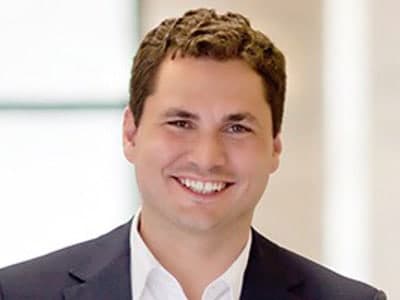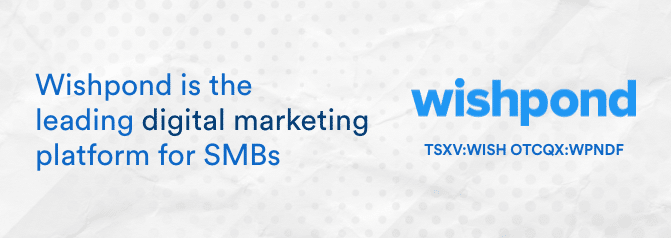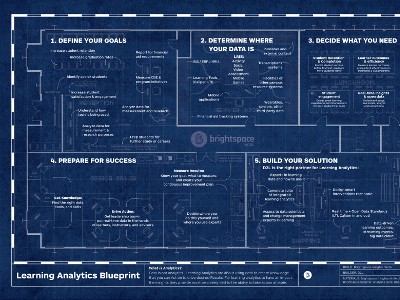

Kitchener-Waterloo Ed Tech company D2L unveiled the newest generation of its learning platform, Brightspace, today and announced general availability of its adaptive learning engine, LeaP.
Since being founded in 1999, D2L has worked to transform outcomes in education and has chalked up a number of successes along the way towards being a dominant player in the Ed Tech space, using adaptive learning, Big Data and predictive analytics to improve student retention rates and outcomes.
A recent unpublished study from the National Scientific Research Council of Canada (NSERC) says, “After collating and processing the results, the results were very favourable for LeaP; the study demonstrates, with statistical significance, a 24% absolute gain and a 34% relative gain in final test scores over a traditional LMS while shortening the time on task by 30% all while maintaining a high subjective score on perceived usefulness.”
While seeing retention rates increase in the Alabama school district that has adopted D2L by over 10% in the last two years, they’ve also seen a 25% increase in retention rates at Accenture, who have adopted the platform in a corporate context.
Previous to founding D2L while studying Systems Design Engineering at the University of Waterloo, John Baker was not planning on following his schoolteacher parents into the realm of education.
Speaking with Cantech Letter about fellow Waterloo tech giant BlackBerry’s track record, Baker says, “It’s not the highs that make the company, it’s the lows and how you handle them that’s going to be the real test. Every company’s gone through it. We’ve gone through it.”
Indeed, D2L faced an almost existential crisis in the face of a patent infringement lawsuit brought against the company by competitor Blackboard Inc., which D2L eventually settled out of court in 2009, after three years of costly legal struggle.
Baker’s calm in the face of what might have been a devastating legal battle only strengthened D2L for future success.
One of OMERS Ventures’ early investments, D2L followed up an $80 million Series A fundraising round in 2012 with an $85 million round in 2014.
Each milestone that D2L passes would tend to make you think that the company is in a very secure place, but what’s striking about John Baker’s attitude towards progress is that D2L is merely at the beginning of a process.
“Even though we’re closing in on about 800 people globally, I feel like we’re just getting started,” he says. “This feels like very early days, and when I go out to speak with clients they’re starting to recognize finally how it’s going to have an impact on learning within their organization, for starters, and then more broadly on the economic impact it’s going to have as we help lift retention and completion rates for students.”
Cantech Letter spoke to John Baker by phone.
It seemed like Brightspace, when it was introduced, was a leap forward in introducing adaptive learning to the classroom. What are the main differences between Brightspace and LeaP?
Adaptive Learning is a new component within Brightspace. What we did when we set out to create Brightspace was to really bring the power of technology to have a positive impact on education. What I saw was technology changing every other industry. For example, I used eBay to buy stamps back in the day, in the late ’90s. And I was seeing such a big impact in every other aspect of life, but it was missing in education. The goal was to create a platform that enabled us to really tackle some of the biggest challenges in improving the educational experience. How do we drive better engagement, improve learning outcomes, help solve productivity challenges, help scale great educational experiences, tackle things like retention and completion, and really, at the end of the day, provide a better experience for students that are going to drive these improved performance results? And “adaptive” has been this magical, elusive target, if you will, for most people, when they think about things like personalized learning. Personalized learning is the ability for you to perfectly tailor what content and what assessments you give to each student in the class. So as you can imagine, not everyone is coming in at the same level and not everyone leaves at the same level. So, for example, when you see that a student is struggling, you can right away, immediately change the content or change the assessment to get them back on track. In a traditional school, it’s very hard. What happens is, many students either leave the course not understanding half the material in some cases, or only understanding part of it. What we’re doing with Adaptive is enabling real-time changes in the learning path, based upon our predictions on if this content’s going to help the student with learning. And if they demonstrate that it doesn’t, then using a lot of what’s called formative assessment, what will happen is we’ll provide another piece of content, another learning activity, another resource, until that student demonstrates or masters that particular objective. And then the path keeps adapting until the student completes the course. The goal is to lift achievement with Adaptive. It’s to help more students reach a full understanding of what was required in that particular course. So you should see a lot more A’s and B’s. So far, with adaptive technology it’s kind of like early computers. There’s only a few big, big publishers in the world, for example, that are doing anything that’s really significant on the adaptive side. It’s like punch cards. It’s really tough to use, really manual, really hard. What we’re doing with LeaP is we’re automating this work and putting it in the hands of everybody, so every instructor and student will have the ability to have this personalized experience.
With this release, you’re promising to “give back time to educators” to concentrate on their job of being teachers. There has always been a knock against the idea of introducing Big Data and machine learning into the classroom, that teachers will become minders of automated systems rather than the Dead Poet’s Society ideal of inspiring students. How do you deal with that kind of pushback?
I hear that all the time. People are naturally concerned about how this is going to change what they do on a day-to-day basis. In some cases, they don’t even want to adopt the technology because they think it’s going to take them more time. And they question the ability for it to produce an improvement in outcomes. What we have to do is demonstrate that if we save them time, then they can free up some resources to be able to experiment with other types of learning. But it also frees them to be more creative, to be more inspiring. The Dead Poet’s Society is a great example. That’s the great thing about technology, it frees us from worrying about content transfer and knowledge transfer, and allows us to do things like problem-based learning. So the hope is that by automating a lot of the tasks, it does free people up to spend their time on a more enjoyable educational experience. So, yeah, we openly admit that. Both my parents are teachers, my grandfather was a teacher. This is not really about replacing teachers. But it is going to change what they do, no question. I don’t know why a teacher needs to grade an assignment anymore. We automate that now. So if it’s a quiz, if it’s multiple choice, guess what? We can grade that immediately and give them instant feedback. So, right there, that’s a great example of freeing up time, and also shortening the time for feedback for students so that teachers can do something more creative.
“It’s kind of like the next Gutenberg moment. The printing process enabled a lot of people to receive a lot of great understanding of knowledge and what was going on in the world. This, I think, is even bigger.” – D2L CEO John Baker
Yeah, I guess that’s the fear, is that the human element is taken away from education, or diminished somehow. But in automating a lot of that drudgework that soaks up administrative time for educators, you’re giving them that time back.
Exactly. We were doing some beta testing on this a few years ago and people were talking about “the age of the robots”. But that’s not the case. It’s exactly what you just said, which is that it frees both student and teacher to explore creativity or other, better forms of learning.
Back in 1999, you were studying Systems Design Engineering at the University of Waterloo. Was it something about the process of going to school, or was it more from your family background that gave you the idea for the original platform?
I think my family influenced me. I don’t think it was direct. I think it was subconscious. But in hindsight, obviously, you see a connection very clearly. But at the time, I remember walking across campus when the light bulb went on. For me, it was a simple problem that I wanted to solve. How do I have as big an impact on the world as I possibly can? At the time, I was on the path to try to become a doctor. And I saw with this an opportunity for technology to improve education as a way to reach millions of people. So it has this ripple effect, if you will. If I help lots of people reach their full potential, they’ll help others reach their full potential. So it seemed natural that that would be a spot that I could focus on. And technology presents us with such an incredible opportunity. It’s kind of like the next Gutenberg moment. The printing process enabled a lot of people to receive a lot of great understanding of knowledge and what was going on in the world. This, I think, is even bigger. When I started, there was only about 100 million people in education. Today, it’s around 158 million. And I can see a day where it’s over 1 billion. But there’s no way to do that by building physical campuses. We need to move to a digital format.
At that time, when you were going to the University of Waterloo, Research in Motion was riding high. D2L benefited from RIM’s decline, along with a lot of other companies in the Kitchener-Waterloo region, by hiring some of its employees as they were laid off. How was that newly developing culture affected by the corporate culture of RIM at that time?
BlackBerry is an incredible company with an incredible track record. What we saw was a number of great people that came out of their organization that we managed to hire having a really positive impact on how we were building our company. But I also am not counting BlackBerry out. Lots of companies go up and they go down. It’s not the highs that make the company, it’s the lows and how you handle them that’s going to be the real test. Every company’s gone through it. We’ve gone through it. I don’t know any company that doesn’t stumble along the way to greatness. I think their new strategy is fantastic.
Aside from the first-world concerns about improving retention rates and grades in post-secondary education and schools, there’s also a case to be made for the knock-on economic effects of improving education worldwide. What’s D2L’s focus on those issues?
We do a lot of that. Not only are we focused on improving graduation rates and retention and completion for the client base that we have, but we also recognize that for us to move the world forward we need to have more people educated. So we do things like massive online open courses, or MOOCs. We do a number of them globally. One of my favourites is out of the University of Tasmania, a MOOC on dementia. They get about 25,000 students signing up every semester. They’ve seen a huge increase in enrollment to their traditional program from the fact that they’re doing this outreach. But it’s breaking down that cost barrier. Those 25,000 people pay nothing to be able to participate in that online learning experience. So that’s an interesting way to scale education to support millions of people in breaking down some of those traditional barriers, like cost or geography. We also have lots of other clients that are doing traditional online education, and they’re supporting a world audience as well. So I think that the more universities and colleges figure out that they can educate the world and export their experiences, I think the better for us to reach a better balance between supply and demand globally. Demand for education is growing incredibly. It’s never been growing as fast. The challenge for a lot of that growth is coming internationally. Even while we saw a lift in retention rates here in Canada and the U.S., globally the growth is incredible. You’re seeing countries really trying to double or triple the number of graduates they’re producing.
“For me, it was a simple problem that I wanted to solve. How do I have as big an impact on the world as I possibly can?”
Yeah. It’s an untapped story about unleashing human potential, not just for a fuzzy feel-good sake, but for practical economic reasons.
A lot of our clients are corporate clients, big organizations like Accenture or the big banks, healthcare entities. And there we’re having a big impact on things like employee retention. Or with onboarding programs, what we’re seeing is that if we improve the onboarding experience it can have tremendous savings and at the same time produce better results. Learning is going to have a tremendous impact on how companies run, as well.
As one of the earlier investments made by OMERS Ventures, how do you evaluate your place within the overall Canadian tech scene? What are the prospects for a large, privately held tech company like D2L in the current funding environment? Do you think about tapping the public markets?
I think you’re going to see a large number of companies, like ourselves, potentially be on the path to an IPO over the next few years. There’s some that have already announced, and then I’m sure that there are others that are hot on their heels. We’re very focused on building a great company. But that’s definitely a potential path, no question.
Do you feel like the release of LeaP is the opportunity for that moment to scale up to where you see the company going?
What we’ve seen is the first step function, which is that we go in with this technology and we do this digital transformation to build better engagement and better personalization for students. But LeaP is this next-step function, right? The hope is that instead of seeing a 10% improvement in retention, maybe we’ll see a 20% or 30% improvement. That’s the hope. Great students are going to progress forward anyway. But there’s this large group that are in the middle, who are on the low side. If you can just help them get over those hurdles and help them get through, so they don’t fail that course or are in a better spot to do well on the exam, just because they’re taking a little longer to learn, that doesn’t mean they don’t have what they need to complete and we can see more people progress through. And the world needs that.
Leave a Reply
You must be logged in to post a comment.





 Share
Share Tweet
Tweet Share
Share




Comment